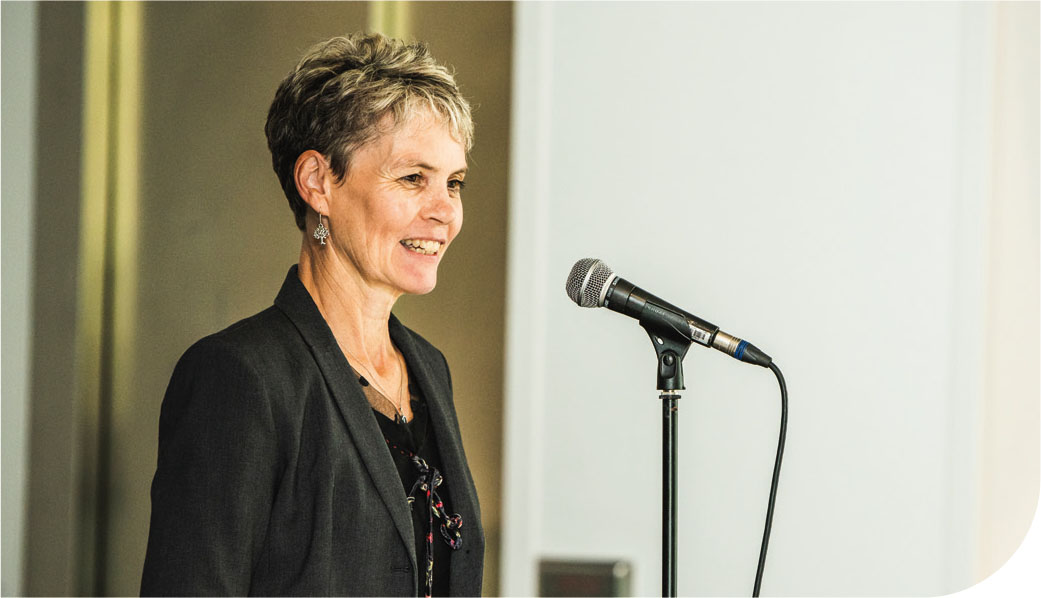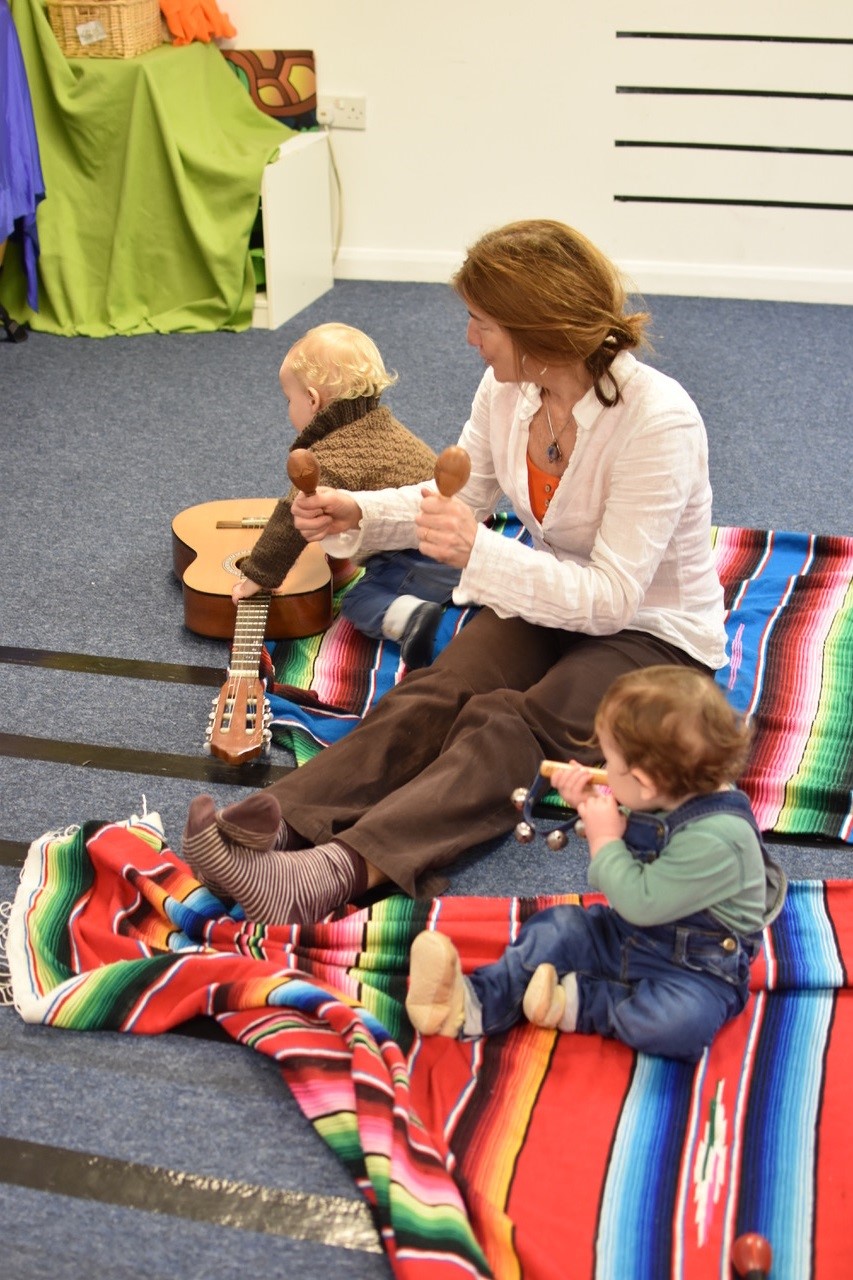
Several years ago, I went along to a nursery to monitor a trainee music teacher. Margareta presented a lively lesson for the children. Afterwards I commended her work but asked her why she did not use her instrument. ‘What do you mean?’ she exclaimed. ‘I sang throughout!’ As an opera singer, Margareta's instrument was her voice. ‘Yes’, I said. ‘But you did not sing.’ The following week, Margareta sang an aria. The response was both astounding and moving from children and workforce alike and had a profound impact on my perception of how a musician's instrument could be presented, experienced, and taught, and what everyone can learn from this experience.
Many educators consider small percussion instruments playing nursery repertoire as enough for developing musical know-how. However, in recent years there has been increased debate on the value of bigger instruments and alternative genres such as jazz, rock, rap, classical, house and others in early years settings, with an effort to embrace the child's cultural and home preferences. Check out Dr Susan Young's fascinating book Critical new perspectives in early childhood music, which challenges traditional approaches.
How do young children learn?
Young children are multi-modal (multi-sensory) in response to new experiences to reflect on, learn and understand. Music provides the potential for shared interest as it permeates air and space, demanding acknowledgement, reflection, and response. As a tactile, visible, often quirky looking resource, I believe all instruments should be an integral part of a child's musical journey. If an instrument is played, children will look, move and/or vocalise and – depending on what they hear – often express deeply personal responses. Alison Harmer shares some wonderful examples with instruments in her paper entitled Collaborative music making in the early years with unconventional instruments.
Whether the instrument is to be performed or for children to hold, both experiences play a critical role in developing musicality, ability, and life skills. These include hearing different sounds. How many children have seen or heard a tuba, clarinet, or panpipes? Hearing, seeing, holding, handling, and investigating a range of instruments is as much a part of their musical journey as singing and sound-play.
Children's instrumental experiences tend to come under three broad categories:
- Baby instruments
- Larger percussion instruments
- Full sized instruments within instrumental groups e.g. percussion, brass, woodwind, strings.
Baby instruments tend to be robust and sometimes of poor sound quality, but nonetheless have value in tactile musical play. The larger ones such as gathering drums, cabasa, agogo, calabash and others may require support and are used under supervision. Instruments such as violins, saxophones, brass, guitars, pianos are dependent on the educator's ability and are, for the most part, untouchable. During my training and mentor travels, I noted many instrumentalists regard playing as a separate entity to teaching. I would ask why their instrument was not used in the lesson. The answer was frequently:
‘It is too valuable.’
‘It is not relevant.’
‘There are too many children to have a go.’
‘The music plan does not require this.’
‘I use it for performing only.’
‘I don't have time.’


Emma Hutchinson at Music House for Children © COURTESY MUSIC HOUSE FOR CHILDREN
In early years conferences, network gatherings and training projects, I noticed reluctance a to admit instrumental skills. A nursery leader who played the flute had never shown her children! Instrumentalists opted to learn three chords on a ukulele and play early years songs and rhymes in the context of EYFS learning outcomes. With the rise of interest in teaching music in this sector, this apparent dumbing down of a skill seems to be at best misconstrued and at worst, just plain bonkers.
Is the resistance to exposing instrumental skills an attempt to legitimise participation with the early years workforce? Is it to make others feel less inadequate? In what context should an instrumentalist view his or her instrument anyway?
I put out a quick, very basic survey to music educators from mainly around London and the southwest to get an updated viewpoint. Of the 50 or so responses, 100 per cent were from instrumentalists with 32 per cent choosing not to demonstrate their instrument to young children, perform (18 per cent) or use their instrument at all (12 per cent). Interestingly, an enormous 55 per cent were interested in learning how to use their instrument as a resource to achieve musical learning and outcomes. This highlights a real need for music educators and early years people to collectively define a place for all instruments in young children's musical lives.
What are the benchmarks for teachers learning about playing instruments to this age group? What expertise or guidance is out there in the digital world? YouTube examples are woefully inadequate in advocating participatory and learning focused instrumental play. Honestly, pop into Google ‘music educators instrumental play with young children’ or ‘playing instruments to young children’ and you will see what I mean! There are many digital and live training courses, but most are aimed at approaches to teaching music overall with no specific modules on using instruments.
How young children perceive instruments
Young children will soak up new things, digest them and, if encouraged, make them personally meaningful. Instrumental sounds can do much to broaden the learning and aesthetic journey for children and the supporting adults. My opening story demonstrates that, far from alienating the singer, the keyworkers respected Margareta for her mastery of an instrument that had the power to emotionally move children and adults. By sharing her skill masterfully, she opened the doors to a new kind of thinking – not that ‘I can't do this’ but, ‘I take what I need from this and share what I know’.
What can you do?
The early years educator and the music educator's skills are undisputed and, for the most part, mutually respected. Music arguably nurtures all areas of development as well as music for music's sake. Adding formal instruments to the educational mix brings music to visual life as well as providing learning, emotional and social objectives.
On many levels, seeing as well as hearing an instrument is rather magical – a visual feast. A flute can create gentle ambience, or the thrilling sound of birds in stories. A pompous trombone rift can elicit the terrifying arrival of a giant in Jack and the beanstalk, thus fine-tuning ears to manage new sound experiences. The soaring melody of a violin helps children fly, twirl, bend, and leap. A trumpet cry trains the memory as it recollects a familiar melody, thus encouraging spontaneous vocal participation. Just imagine the depths of despair as a cello shifts the emotional perspective to include sadness, empathy, and woe in a newly developing story, helping children to understand emotion and its place in our lives. What about the piercing cry of an oboe alerting all to a new genre, whether folk, rap, rock or classical?
‘But,’ I hear you cry, ‘my instrument is too precious!’ Set your boundaries. Your reason for showing, sharing, and playing does not have to be about touching. It can be for listening, for moving, for reflection, for imagination, for vocalising and for wonder. Playing provides visible clues for the sound source. Orchestral instruments deserve to clamber out of their concert box. If finance permits, provide a cheaper alternative for tactile opportunities. Taking pride of place among the early years will bring new dimensions and perspectives in children's musical play. Above all, keep instruments alive and real.
Grateful thanks to contributors: Jenna Raggett, Fabiana Chavez, Alison Harmer, Julie Digby and Fynn de Sousa.
Young S. (2018) Critical new perspectives in early childhood music – young children engaging and learning through music. Pub: Taylor and Francis
Harmer A. (2017) Collaborative music making in the early years with unconventional instruments. Available at bit.ly/3ymPcSm








